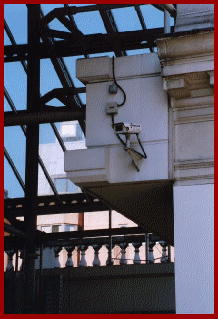| ||||||||||||||||||||||||||||||
Welcome to the | ||||||||||||||||||||||||||||||
 | ||||||||||||||||||||||||||||||
 | ||||||||||||||||||||||||||||||
All you need to know about lenses, | ||||||||||||||||||||||||||||||
Fixed focal length lenses, can only produce the degree of coverage which is dictated by their optical design. So for example, on their respective format imagers:- For most static camera applications, these fixed ‘focal length’ lenses should still be the preferred choice for CCTV professionals, equipped with the knowledge and experience to get the best out of them. However, in recent years Doktor Jon has noticed an increasing shift towards the CCTV industry’s reliance on ‘varifocal’ lenses for a wide range of applications. Varifocal lenses are best considered as a very basic type of ‘zoom’ lens, although to be strictly accurate there is a significant difference in the way they function. For an inexperienced, or possibly even lazy installer, varifocals can provide a simple method for framing the image, without having to fiddle around trying different lenses. Unfortunately, there is no such thing as a free lunch, and Doktor Jon would have to say that with few exceptions, a varifocal will not produce the level of optical quality possible using fixed focal length optics. You might consider that most varifocals carry a premium cost over a single (correctly chosen) fixed lens, but then the normal argument put forward is that they’re a lot cheaper than the two or three fixed lenses needed to provide an equivalent degree of coverage. | ||||||||||||||||||||||||||||||
 | ||||||||||||||||||||||||||||||
IMPORTANT: No material may be reproduced, copied or redistributed from this site, © doktorjon.co.uk 2004 - 2008 Homepage...:...Gateway...:...Technical Gateway....:....Quickfind Index....:....Equipment Directory | ||||||||||||||||||||||||||||||

